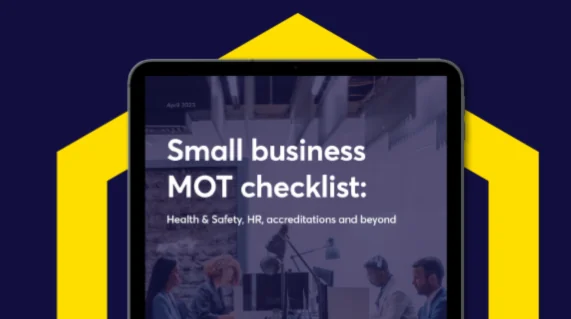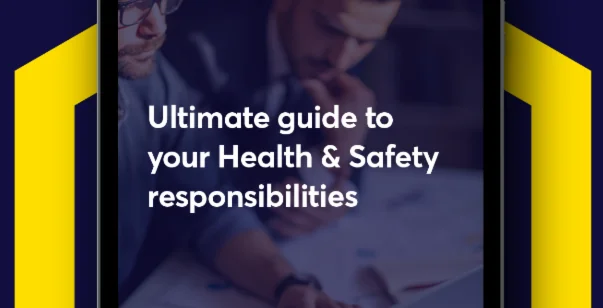Working in Cold Conditions Risk Assessment
The Chartered Institute of Personnel and Development (CIPD) have said employers must be flexible during harsh weather conditions, such as snow and ice, and should not force staff to “risk life and limb” getting to work.
When such weather conditions have occurred this can result in schools across the country closing, leaving many parents with child care problems. Trains can be cancelled and motorists are often warned only to make essential journeys.
In such circumstances many staff members may be unable to get to work or opt to work from home. Although this is the case, business does not have to stop entirely. With good business continuity and safety policies in place, together with a strong communication system, business’s can continue to operate.
What to consider when working in cold conditions
There are many things to consider when working in cold conditions. Here are a few of the most important ones to help you get started.
- Communication is paramount so make sure everyone is kept informed of changes. For example, if you decide to close the office for the day, all employees need to be made aware so that they can make arrangements.
- Contractors, freelancers and part-time workers may also need to be contacted. They may also need to make adjustments to their work schedules.
- It is important to consider the inside temperature and comfort for staff. Workplaces should not drop below 16 degrees Celsius (13 degrees Celsius where work requires severe physical effort). The Chartered Institution of Building Services Engineers (CIBSE) suggests a range from 20°C to 24°C for offices involving sedentary tasks.
- Snow and ice are hazards that may result in slips, trips and falls. Advise staff of the correct footwear, use signage where possible and ensure that icy surfaces are gritted accordingly.
- Driving to and from the workplace can be dangerous in times of extreme weather. In these extreme cases of weather, such as snow storms or blizzards, it might be necessary to advise staff to work remotely in order to avoid traveling in these conditions.
Advice to those with responsibility for health and safety
At times of extreme and dangerous weather it is essential that communication is retained throughout the workforce. Staff must be instructed as to what the employer’s policy is, how to follow it and who to communicate with if they have any queries.
We have prepared a checklist below for you to go through in such cases to make sure that you have all your bases covered.
Risk assessment
It must be made clear who makes the final decision in times of bad weather, in terms of when people should leave the workplace or if a workplace should close down entirely for a specified period.
In these situations, the five stages of risk assessment should be applied, as always, and a decision should be made by the designated person.
Safety in the workplace
With fewer people in the workplace, lone working situations may arise and it should be ensured that communication is maintained with any employees in this situation and that non- essential high risk tasks are avoided. Special consideration should also be given to vulnerable workers such as pregnant and disabled employees.
Emergency arrangements
Due to low staffing levels, consideration needs to be given to arrangements for dealing with workplace emergencies, such as:
- Failures of safety critical systems
- Persons trapped in lifts
- First aid incidents
- Fire evacuations
- Power failures
- Workplace temperatures falling below the minimum guidelines
Working from home
Home working might be seen as a solution during extreme cold weather conditions, however, employers should be aware that it is also their responsibility to ensure their employees’ health and safety if they are working from home.
Home working risk assessments should be undertaken to ensure employees are able to comfortably and safely work from home. It’s recommended that you carry out these risk assessments on potential working environments on a regular basis, before bad weather strikes.
Driving to work
It should be ensured drivers are allowed extra time to complete journeys and factor in alternative routes and that they are not pressured to complete any journeys made dangerously difficult by the weather.
Company vehicles should be provided with suitable equipment for the cold working conditions, for example, winter tyres, adequate antifreeze, a fully charged battery, ice scraper and de-icer or traction mats.
Slips, trips and falls
Walking to and from car parks or between buildings at work during this weather requires special attention to avoid slipping and falling. Slips and falls are some of the most frequent types of injuries during the winter months, according to the HSE.
Employees should be reminded to avoid boots or shoes with smooth soles and heels, such as plastic and leather soles and instead, wear a pair of well insulated boots with good rubber treads and to walk slowly and with shorter steps when on icy surfaces.
Grit salt should also be used on these slippery surfaces. Making sure you’ve got enough grit salt spread around the workplace is recommended in winter months.Main pathways and steps should be cleared as far as possible of snow and ice to allow safe access to the buildings. Employees should be reminded to remove as much snow and water from their boots as they can when entering buildings as water from melting ice on the floor can also lead to slippery conditions.
Updates
Any news specific to the organisation should be sent out by email and published on any intranet sites. Try to send out any information as soon as possible to make sure that employees have adequate time to make arrangements.
Prior to extreme weather conditions, you should make sure you’ve got a working communication system in place. All employees should be receiving emergency information when it is being sent out.
Employees trapped at work
Employers should keep an eye on the weather throughout the day, taking care that employees don’t get trapped at work and put themselves at risk if snow starts to fall.
Communication lines need to be in place to ensure a workplace can be closed down relatively quickly if necessary. It is also worth having in place contingency plans should employees be trapped at work or unable to travel home.
It is also a good idea to practice emergency evacuation procedures on a regular basis to ensure that all employees are familiar with the process.
Contractors
It is important to consider contractors, freelancers and part time staff. Make sure you have a list of ways to contact all people who usually work within your workplace. If you have subcontractors or freelancers on site, they should also be familiar with your evacuation procedures, in the case of emergencies.
Members of the public
Ensure that suitable and sufficient signage is displayed to inform the public of important information. Make sure that the signage is clearly visible to everyone and is large enough to be seen from a distance.
PPE
If outdoor working is required, ensure that suitable and sufficient PPE is provided, including suitable thermal gloves, insulated clothing, waterproof or insulating boots or high visibility vests.
Systems of work for outdoor activities should take account of reasonably foreseeable poor weather.
Useful sources for further information
- The TUC has also advised companies to ensure they have a bad weather policy, which sets out what is expected of staff and what they should do when snow, ice and a lack of transport prevents them from getting to work. A model policy is available, which can be tailored-made to your company’s needs.
- Information on weather conditions is available from the Met Office or local radio broadcasts.
- Public transport service updates and information on disruptions due to the snow and ice conditions are available on rail and bus operator’s websites. Traffic updates and important travel information can be found at: www.theaa.com
- Information on workplace temperatures is available: hse.gov.uk





